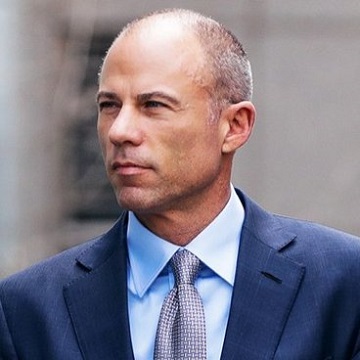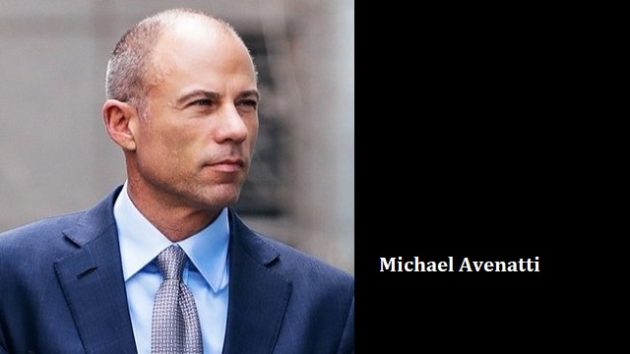Avenatti And His Fallacious Argument For Indicting The President

Michael Avenatti. Twitter.
On September 13, 2018, Michael Avenatti made the case for President Trump’s indictment in the opinion section of The New York Times. There are only two flaws with Avenatti’s argument. It has no basis in fact. It has no basis in law.
First, let us recall who Avenatti is. He is the attorney for Stormy Daniels and Karen McDougal, two of the least trusted names in America. He is also a media hound who has a predilection for involvement in celebrity cases. But despite his lucrative legal ventures, Avenatti has not been without his legal and financial troubles. Avenatti’s law firm has been forced into bankruptcy on at least two occasions, and he has personally been subject to multiple accusations of financial shortcomings in his professional dealings.
So, naturally, one would expect that The New York Times would be especially careful in accepting a piece dealing with a matter in which Avenatti was directly involved.
Think again.
First, let’s take the absence of supporting facts.
In order to prosecute anyone in the United States, much less the President, there must be some evidence that a crime has been committed. Avenatti has none. As a matter of fact, in his article, all he says as to the factual basis for indicting the President is, “there are many indications that there is [sufficient evidence to support an indictment of President Trump] – the special counsel, Robert Mueller, who is investigating possible Russian interference in the 2016 election, and prosecutors from the United States Attorney’s Office for the Southern District of New York, who are investigating payments to my clients, Stormy Daniels, and Karen McDougal, should present their evidence to grand juries.”
That’s it. That’s all he’s got. A wish. A desire. Never mind that the Special Prosecutor has admitted that he has yet to find any evidence of collusion. And never mind that the payments made to Avenatti’s client have a very high bar to clear before rising to the level of criminality. These are obstacles utterly ignored by Avenatti, but they present no difficulties to either him or The New York Times.
Under any other circumstances, I would be in a position to conclude my commentary since the case can move no further, except that Avenatti is allowed to continue.
So now let’s look at the absence of supporting law.
Having established his airtight factual case for prosecuting the President, Avenatti turns to the matters in law. Here, he makes the argument that the President of the United States, the leader of the free world, should be prosecuted so that the Supreme Court may rule on the constitutionality of whether the President is immune to prosecution. (I kid you not.)
I submit that Avenatti couldn’t care a hare’s foot as to the Supreme Court’s opinion on the President’s immunity to prosecution. In my opinion, his only interest lies in moving his case forward and staying in the spotlight. Regardless, the resolution of an academic argument regarding the balance of power between the executive and the judiciary is hardly a sufficient reason to prosecute the President, and of course, The New York Times should know that.
But more to the point, Avenatti makes no compelling case that the President is even subject to prosecution by any method other than impeachment. Article I, Section 2, Clause 5, expressly states, “The House of Representatives . . . shall have the sole Power of Impeachment.” Further, Article I, Section 3, Clause 6 of the United States Constitution makes it perfectly clear that the power to try the President lies with the Senate:
The Senate shall have the sole Power to try all Impeachments. When sitting for that Purpose, they shall be on Oath or Affirmation. When the President of the United States is tried, the Chief Justice shall preside: And no Person shall be convicted without the Concurrence of two thirds of the Members present.”
And finally, and most directly on point, Article II, Section 4 states, “The President, Vice President and all civil Officers of the United States shall be removed from Office on Impeachment for, and Conviction of, Treason, Bribery, or other high Crimes and Misdemeanors.”
With these three phrases, the Framers created a system by which a miscreant president can be found subject to trial, tried, and convicted. True, the Framers did not use the word, nor address the possibility of, prosecution, but this fact does not open the door to Avenatti’s argument. It completely closes it. Let us recall that the federal government (the national government to the Framers) is a government of enumeratedpowers. If it is not in the Constitution, then it was not a power for the national government to employ.
The fact that prosecuting or indicting the President is nowhere mentioned in the Constitution serves as a pretty stark repudiation of the remedy for the highest-ranking official of the land. Moreover, a close reading of Article II, Section IV, pretty much lays to rest any foundation for a different interpretation, “The President. . . shall be removed from Office on Impeachment of, and Conviction for. . . ” That’s it. That’s the only remedy available.
If the President were to be convicted as a result of his impeachment and then removed from office under the legislature’s judiciary powers, he or she would no longer be President and would, at that point, be subject to criminal prosecution. That’s when a jurisdictional officer becomes empowered to prosecute a former president.
It seems pretty clear-cut that the House of Representatives is the President’s grand jury and the Senate his judge and petit jury, but Avenatti, in his fallacy, argues to the contrary using a case involving none other than Bill Clinton; Clinton v. Jones.
The first error Avenatti makes in deploying this case is his conflation of the rules applying to civil litigation with those involving a criminal case.
Clinton was a civil lawsuit brought against the President of the United States, Bill Clinton, by Paula Jones for damages involving her alleged sexual harassment. In it the President argued that he was not subject to litigation because, in carrying out the duties of the Office of the Presidency, he was too busy to properly defend himself. Additionally, it would be inappropriate for the President to be subjected to depositions and other inquiries in mounting his defense as such activities would inevitably interfere with his abilities to carry out his duties as President. The Court disagreed, holding that no one, even the President, is above the law, and the trial was allowed to move forward.
But the prosecution of a president is a criminal matter for which the ruling in Clinton would not apply, nor would the conclusion that no man is above the law because even in arguing that the President is immune to prosecution, he would still be subject to the Constitution of the United States and the remedies divined by the Framers of that foundational document.
In Men In Black, Agent Kevin Brown, the character played by Tommy Lee Jones, picked up a copy of three curbside tabloids calling them, “the best investigative reporting on the planet. Go ahead; look at The New York Times if you want to. They get lucky sometimes.”
Although he was right in principle, he erred in giving The New York Times too much credit.
EDITORS NOTE: This column originally appeared in The Revolutionary Act. The featured image of Michael Avenatti is from Twitter.



Leave a Reply
Want to join the discussion?Feel free to contribute!